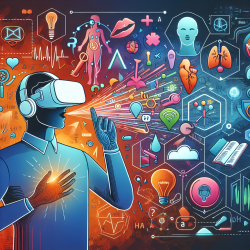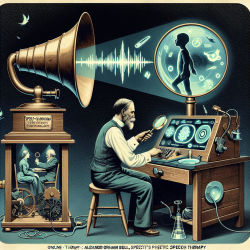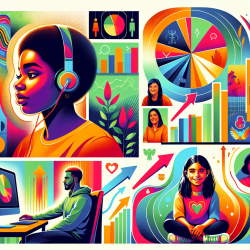Introduction
Virtual Reality (VR) technology has evolved significantly since its inception, expanding beyond gaming into various fields such as education, healthcare, and therapy. A recent literature review titled "How Virtual Reality Technology Has Changed Our Lives: An Overview of the Current and Potential Applications and Limitations" provides insights into VR's transformative potential and its current limitations. This blog explores how VR can be leveraged in speech-language pathology to enhance therapeutic outcomes for children, drawing from the research findings and encouraging further exploration into this promising technology.
VR in Speech-Language Pathology
Speech-language pathology (SLP) can greatly benefit from the immersive and interactive nature of VR. By simulating real-world environments and scenarios, VR offers a unique platform for children to practice communication skills in a controlled yet realistic setting. Here are some ways VR can be integrated into SLP:
- Simulated Social Interactions: VR can create virtual social scenarios where children practice conversational skills, emotion recognition, and social cues, essential for those with autism spectrum disorders (ASD).
- Articulation and Language Exercises: Interactive VR environments can make repetitive articulation exercises more engaging, encouraging children to participate actively.
- Therapist-Directed Sessions: VR allows therapists to guide sessions remotely, providing personalized feedback and adjustments in real-time.
Benefits of VR in SLP
The integration of VR in SLP presents several benefits:
- Enhanced Engagement: The immersive nature of VR captures children's attention, making therapy sessions more enjoyable and effective.
- Safe Learning Environment: VR provides a safe space for children to practice skills without the fear of real-world consequences.
- Data Collection and Analysis: VR systems can track progress and provide data-driven insights, allowing therapists to tailor interventions more precisely.
Challenges and Considerations
Despite its potential, the implementation of VR in SLP comes with challenges:
- Accessibility and Cost: VR equipment can be expensive, limiting accessibility for some schools and families.
- Technological Limitations: Issues such as cybersickness and hardware requirements need to be addressed to ensure a comfortable user experience.
- Training and Expertise: Practitioners require training to effectively integrate VR into therapy, highlighting the need for professional development.
Future Directions
As VR technology continues to advance, its application in SLP will likely expand, offering more sophisticated and tailored interventions. Researchers and practitioners are encouraged to explore VR's potential further, considering both its benefits and limitations. By staying informed and adaptable, SLP professionals can leverage VR to create impactful outcomes for children.
To read the original research paper, please follow this link: How Virtual Reality Technology Has Changed Our Lives: An Overview of the Current and Potential Applications and Limitations.










